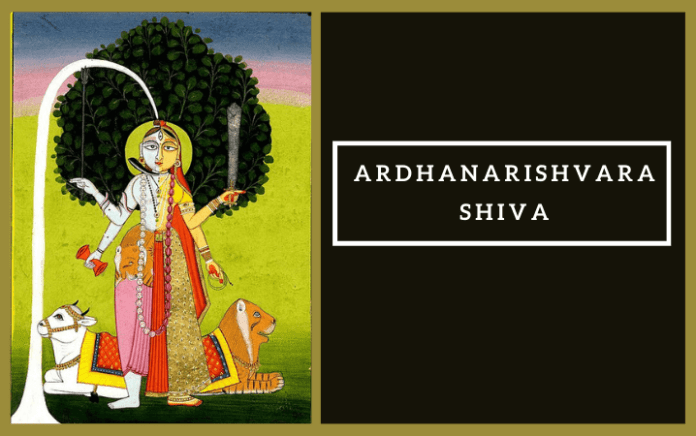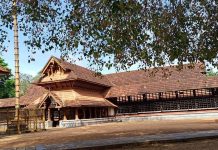Ardhanarishvara Shiva, the composite and androgynous form of Lord Shiva and his divine consort, Goddess Parvati, represents a profound synthesis of masculine and feminine energies within Hindu mythology. This iconic deity, depicted as a fusion of male and female attributes divided along the middle, symbolizes the inseparable union of Shiva and Shakti—the cosmic forces of creation and transformation. Rooted in ancient folklore and philosophical concepts, Ardhanarishvara embodies the eternal harmony and balance that pervade the universe.
Origin and Mythological Tales:
According to Tamil folklore, the origin of Ardhanarishvara can be traced to Mount Kailash, the sacred abode of Lord Shiva. When the Gods and sages journeyed to pay homage to Shiva and Parvati, Rishi Bhringi, in his single-minded devotion, disregarded the presence of Goddess Parvati and worshipped Shiva alone. Enraged by this act, Parvati cursed Bhringi, causing him to lose his flesh and blood, transforming him into a skeletal form. In compassion, Shiva bestowed upon Bhringi a third leg to support his skeletal frame. Witnessing Parvati’s austerity, Shiva granted her the boon of eternal union with him in the form of Ardhanarishvara.
Symbolism and Hidden Meanings:
The concept of Ardhanarishvara holds profound symbolism, representing the harmonious balance and interdependence of masculine (Purusha) and feminine (Prakriti) energies within the cosmos. It illustrates how Shiva, the masculine aspect, and Shakti, the Sacred Feminine, are intrinsically linked and complementary. The union of Ardhanarishvara symbolizes the cosmic marriage between Purusha and Prakriti, essential for the creation and sustenance of the universe.
Furthermore, Ardhanarishvara embodies the concept of Kama, or passion, which drives the process of reproduction and creation. The combination of Shiva’s Linga (phallus) and Goddess Parvati’s Yoni (womb) signifies the creative potential and life-generating force inherent in their union. Through Ardhanarishvara, devotees are reminded of the inherent equality and unity of masculine and feminine forces, which together constitute the divine totality.
Cultural and Philosophical Significance:
The Ardhanarishvara concept transcends religious boundaries and permeates various aspects of Hindu culture and philosophy. It serves as a potent symbol of gender equality, emphasizing the complementary roles of men and women in society. Additionally, Ardhanarishvara embodies the philosophical principle of Advaita, teaching devotees the underlying unity and non-dual nature of existence beyond apparent dualities.
Conclusion:
Ardhanarishvara Shiva, the divine embodiment of harmony and divine union, encapsulates the timeless wisdom and profound symbolism inherent in Hindu mythology. Through its portrayal of the inseparable union of masculine and feminine energies, Ardhanarishvara inspires devotees to embrace balance, harmony, and equality in all aspects of life. As devotees contemplate the majestic form of Ardhanarishvara, they are reminded of the eternal oneness that pervades the cosmos, guiding them towards spiritual awakening, inner harmony, and divine realization.

























































